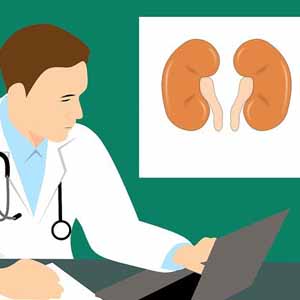Free fatty acids cause podocytes dysfunction and inflammation

Accepted: November 9, 2023
All claims expressed in this article are solely those of the authors and do not necessarily represent those of their affiliated organizations, or those of the publisher, the editors and the reviewers. Any product that may be evaluated in this article or claim that may be made by its manufacturer is not guaranteed or endorsed by the publisher.
Authors
The mechanisms underlying obesity-related kidney disease are not well understood. Growing evidence suggests that free fatty acids (FFAs), a cause of oxidative stress, play an important role in obesity and its related complications. So, we decided to investigate, in a human-conditioned immortalized podocyte cell line, the capacity of physiopathological concentrations of 27nM of nonconjugated palmitate to induce intracellular reactive oxygen species (ROS) production, podocytes endoplasmic reticulum (ER) stress, podocytes inflammation, and mitochondrial dysfunction. A conditionally immortalized human podocyte cell line was exposed to different percentages of palmitate conjugated to bovine serum albumin (BSA) for 24h. We observed that palmitate, at the same concentrations seen in obese patients, caused overproduction of ROS in human podocytes and this oxidative stress induces dysfunctions in podocytes like inflammation and changes in profibrotic and lipotoxic markers. High-mobility group box 1 (HMGB1) is likely known to be a major mediator of ROS damaging effects, as its pharmacological inhibition prevents all ROS effects on podocytes. Our study shows how, in podocytes, an unbounded fraction of 27nM of palmitate can induce dysfunctions similar to that observed in obesity-related glomerulopathy (ORG). These results could contribute to elucidating underlying mechanisms contributing to the ORG pathogenesis.
How to Cite

This work is licensed under a Creative Commons Attribution-NonCommercial 4.0 International License.
PAGEPress has chosen to apply the Creative Commons Attribution NonCommercial 4.0 International License (CC BY-NC 4.0) to all manuscripts to be published.

 https://doi.org/10.4081/jbr.2023.11596
https://doi.org/10.4081/jbr.2023.11596



